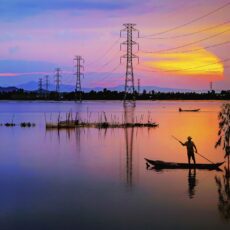
When you think of Siberia, you probably picture snowmobiles and huskies. These sights, however, are to become less of the norm, replaced instead with out of control wildfires and disappearing sea ice. Siberia, and indeed other parts of the Arctic Circle (Canada, Alaska, and Scandinavia) are expected to really start heating up. As in, twice as fast as the rest of the world.
It has long been known that global warming will impact Arctic regions much more severely than elsewhere on the planet, because of the loss of ice and snow, which effectively reflect a large proportion of the radiative heat from the sun’s UV rays. In fact, thick sea ice covered in snow will reflect up to about 90% of the solar radiation hitting it. Take away that high albedo surface and you’re left with less protection from the sun, and a phenomenon called “Arctic amplification” — meaning the warming we see in the Arctic is amplified compared to elsewhere. This is a great example of the importance of realizing that 1.5°C of global warming is an average, and does not simply mean that wherever you are in the world, you’re going to feel 1.5°C warmer. Many places on Earth will experience average temperatures much higher than this increase.
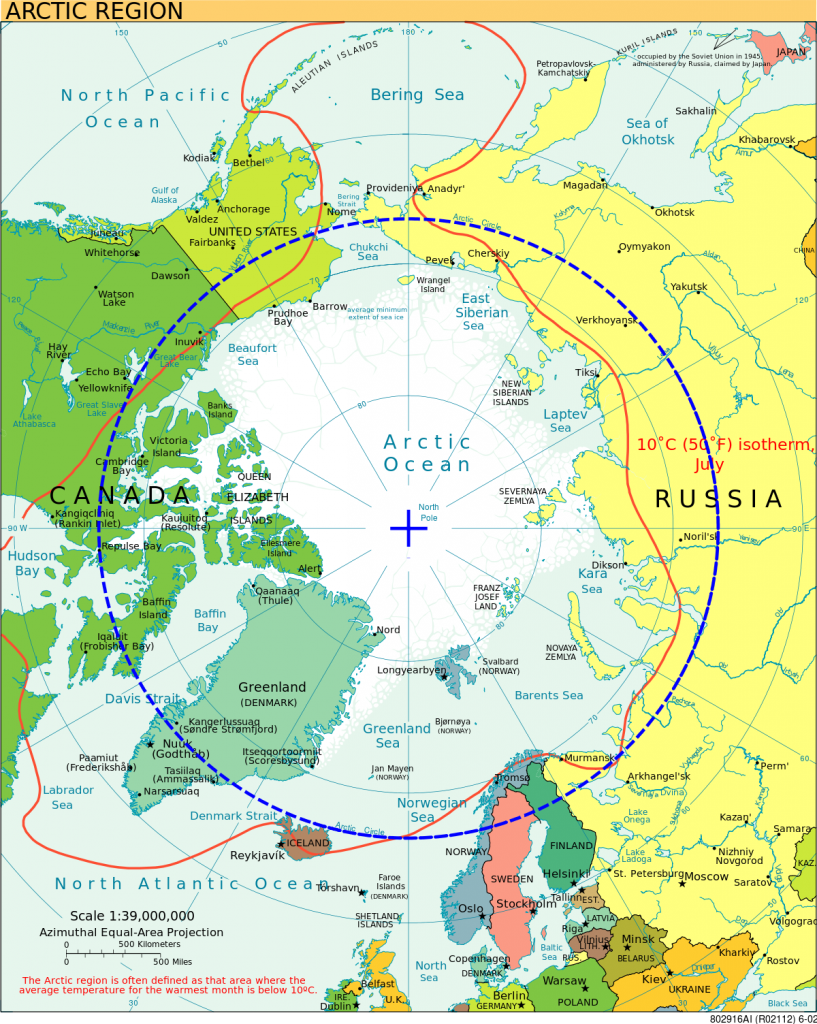
So on that note, let’s talk digits. Verkhoyansk, a Siberian town in northeast Russia about 260 miles south of the Arctic coast, recently hit 38°C (100.4°F). That’s scorching in anyone’s books! But for this part of the world, actually dangerous and unbearable. Their usual June average is 20°C (60°F) – a vast difference. But on Saturday June 20, 2020, this small town was hotter than Tampa and matched Tucson! Another super interesting point to note here is that coldest ever temperature for Verkhoyansk was recorded in Feb 1892, at -67.8°C (-90°F). This gives this little town a very good chance of having the unenviable record of largest temperature range ever known on Earth!
Anyone will tell you that one random day of extreme heat is going to happen from time to time, and shouldn’t cause alarm. And that’s true. But the problem with this small town’s history is that there’s a trend. Basically, this is the difference between weather and climate: it’s the climate which is being changed by anthropogenic carbon emissions, and a symptom of this climate change is global warming.
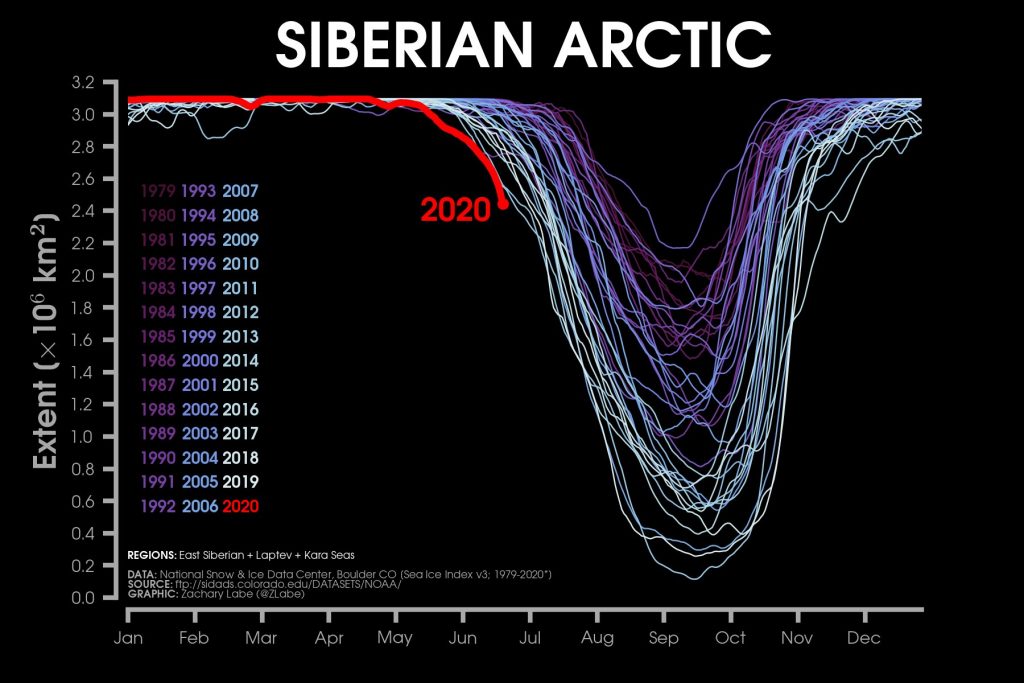
Average temperatures in Siberia from December to May were the warmest on record since at least 1979 – but NASA suggests that in fact this could be the hottest 6 month stretch since 1880. This was a massive 1.9°C warmer than the previous 5-month-warm stretch in 2016. May temperatures throughout Siberia were an average of 18.5°F warmer than usual – making that month the warmest on record for the entire Northern Hemisphere…and in fact the globe. The whole of Russia is in fact emerging from their warmest winter ever since records started 140 years ago, with barely a snow flake falling (fake snow was placed on the streets for NYE celebrations!). And the Arctic Climate Forum predict this trend is here to stay, suggesting the whole summer will be warmer than average for the entire Arctic Region. So it’s no surprise to learn that according to historic records, an atmospheric scientist has reported that sea ice in Siberia is at a 41-year all time low. With less ice and snow, less solar radiation is reflected, causing more warming, leading to less ice and snow, and so on.
If only it were warmer temperatures, the outlook actually wouldn’t be so concerning. But along with this, of course tied to this, comes a myriad of other consequences. Fish are harder to catch as they’re swimming deeper to avoid the warmer waters, so fisherman are suffering; flowers are blooming at least 3-4 weeks earlier than usual; Indigenous reindeer herders have noted river ice breaking up and migratory birds arriving earlier than usual (and in different geographical patterns); and unfamiliar plants are popping up in the tundra. Then there’s the thawing permafrost – which on the face of it doesn’t sound that bad, until you learn that buildings have their foundations buried deep in this permafrost, so the thawing is leading to unstable and even collapsing foundations. Entire buildings are being lost and millions of dollars of damage is being done – and that’s not including the clean up (or priceless environmental damage) from the 20,000 tons of diesel which spilled into a river near Norilisk, again due to sinking foundations into thawing permafrost. Here’s the kicker on that angle: Russian officials have long thought that receding sea ice would allow further oil and gas exploration! But now, since President Putin declared a ‘state of emergency’ on the back of the Norilisk spill, he appears to have done a 180° on his stance on climate change: previously doubting it, but now admitting that it is potentially unleashing devastating impacts to the country’s infrastructure.
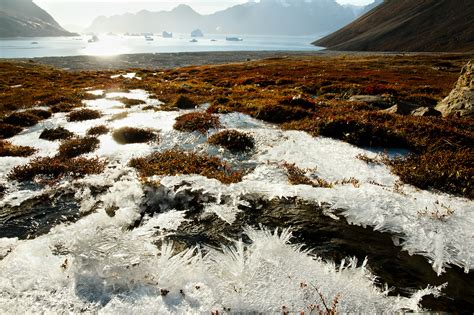
On a final note on the thawing permafrost, invisible and arguably even more severe damage is caused by huge amounts of carbon being released, after safely being locked away within the permafrost for eons. The faster this thawing occurs, the more greenhouse gases are released.
Lastly, if further evidence were needed that the Arctic Circle is in trouble, Siberia is fighting massive swaths of burning forest. Forest fires are common there, usually caused by lightening strikes. But thanks to the increasing warmth and lessening rain and snow, they are worsening year on year. 2016, 2017 and 2018 all saw huge losses of forested land. But their 2019 wildfires saw roughly 38 millions hectares go up in smoke, and so far the fire season of 2020 is worse again: in Krasnoyarsk region ten times as much territory was ablaze on 27 April 2020 compared with last year. Similarly to losing permafrost, a burning forest provides a double blow: the loss of a carbon sink PLUS the release of megatons of carbon. About 79 megatons of carbon was released in just one month of burning, in July 2019.
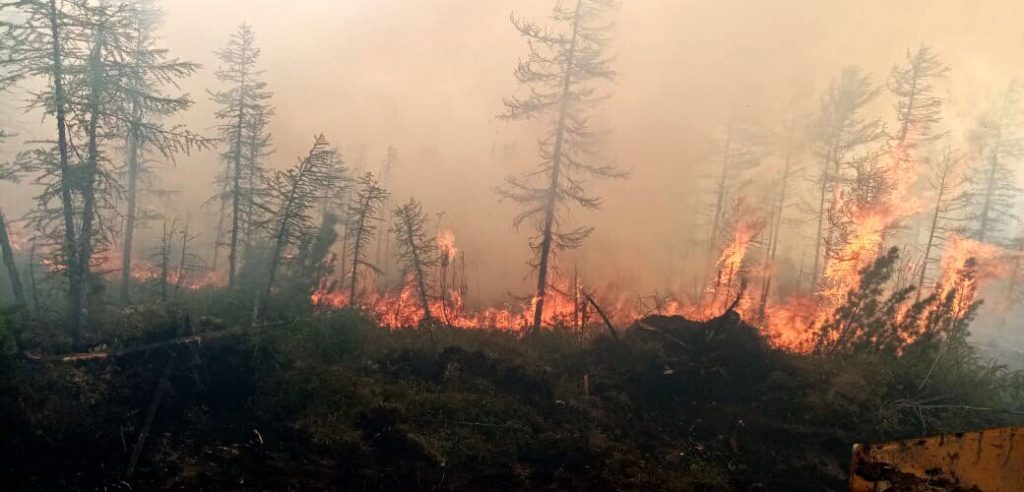
The list of dire outcomes which the Arctic Region is experiencing from increasing heat is long and complicated. Somewhat less complicated is the reason for it. Heat waves are caused by high pressure systems. A downward-moving air column compresses the air that’s closer to the ground, holding it still and heating it up. Basically like an oven. That high pressure also forces clouds away and around the column, creating an unobstructed line of light between the ground and the sun. So now it’s a fan forced oven. The warmer ground then dries out in the heat, meaning less evaporation potential. So this provides even better conditions for maintaining the warm, dry air.
I’ve outlined lots of problems, but what’s the solution? We must stop burning fossil fuels in order to effectively drop global carbon emissions and reduce the impact of global warming. This will help slow permafrost thawing and sea ice melting, which means fewer emissions. Without demand for fossil fuels, Russia will not drill for more oil and gas, and we stop the cycle. We need drastic and immediate action or these ‘extreme’ weather events will only become increasingly normal.


